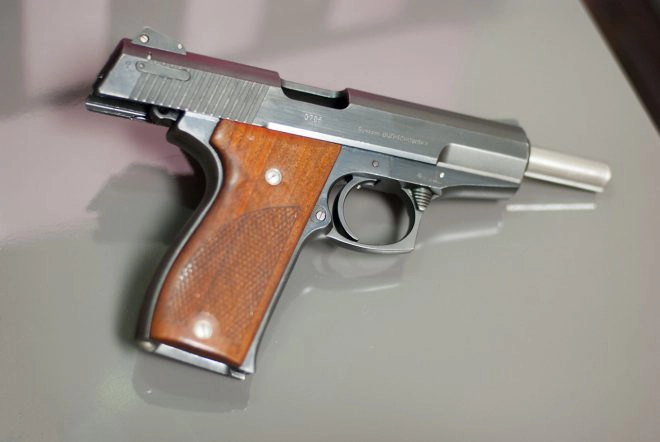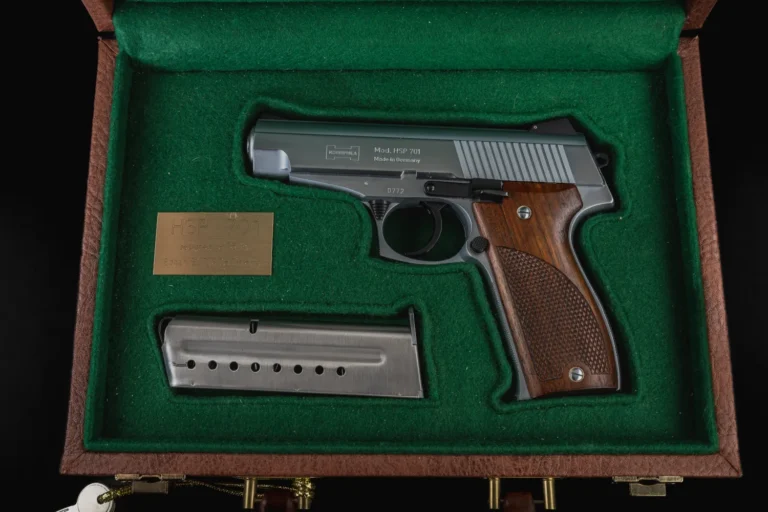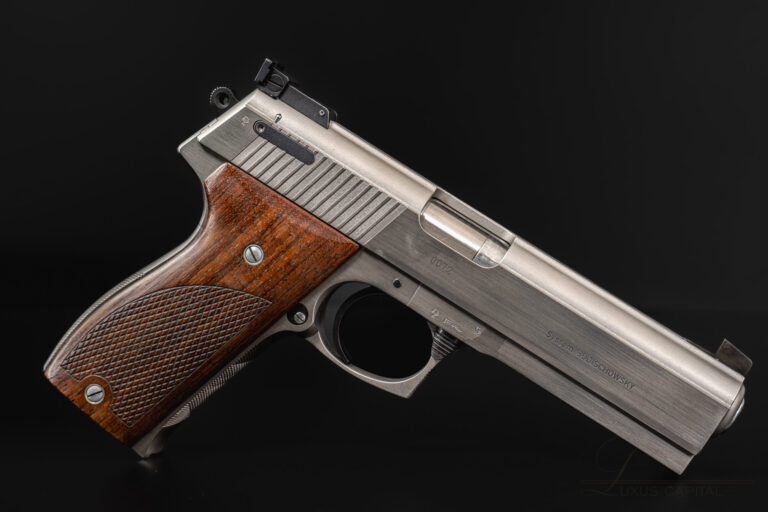In the annals of firearm history, certain names resonate with the echo of innovation and craftsmanship. Among them, Edgar Budischowsky stands out as a beacon of precision engineering and design excellence. Born in West Germany and carrying a passion that crossed borders, Budischowsky’s legacy is one of meticulous attention to detail and a relentless pursuit of quality in firearm design. His most notable creation, the TP-70 double-action pocket pistol, is a testament to a lifetime dedicated to the art of gunmaking. This article unfolds the history of Edgar Budischowsky’s work, exploring his contribution to the world of firearms and the enduring legacy that continues to inspire collectors and enthusiasts today.
The Beginnings of a Legacy
Edgar Budischowsky’s journey into the realm of firearm design was not a product of chance but the culmination of an inherent fascination with mechanics and a profound understanding of precision. Trained as a gunmaker in the prestigious gunsmithing schools of Ferlach, Austria, Budischowsky’s early work for the proof house in Ulm laid the groundwork for his future endeavors.
The world first took notice of Budischowsky’s prowess when he introduced the TP-70, a firearm that combined the compactness desired in a pocket pistol with the accuracy and reliability of a full-sized handgun. Manufactured initially in Germany, the TP-70 was a marvel of engineering, available in both .22 and .25 caliber. Its design was unique, an amalgamation of the tried-and-true mechanisms of Colt and Walther, yet it boasted an identity all its own. It was during these formative years that Budischowsky’s name began to be uttered with respect in the circles of firearm aficionados.
The Michigan Models: A Testament to Quality
From 1973 to 1977, the TP-70 entered a new chapter of its existence. The production shifted to Mount Clemens, Michigan, under the auspices of Norton Armament Corporation. These Michigan models were renowned for their superior quality, quickly becoming the gold standard by which later iterations were judged. The Michigan period represented a peak in Budischowsky’s design—a time when his vision was executed with such fidelity that the resulting pistols were not just weapons but works of art.
This era saw the introduction of the TP-22, also fondly referred to as the “Budischowsky,” which retained the original’s distinctive characteristics: a double-action mechanism, a delayed blowback system, and a level of craftsmanship that set it apart from the mass-produced firearms of the time. These pistols were not just tools of defense but collectors’ items, valued for their precision and the story they told of a man dedicated to perfection.
The Designer’s Mark: Serial Numbers and Significance
The distinctiveness of Budischowsky’s designs is marked by more than their mechanical excellence; it is immortalized in the serial numbers that each piece proudly bears. These numbers do more than identify; they tell the story of each gun’s origin, its journey through production, and its ultimate destination in the hands of a discerning owner. Collectors and historians alike seek out these serial numbers, recognizing them as a signature of authenticity and a link to the firearm’s storied past.
During his active years, Budischowsky’s approach to serial numbering was as unique as his designs. Each firearm leaving his hands was an individual masterpiece, and the serial number was its certificate of birth, ensuring no two pieces were ever completely alike. This careful record-keeping was not just for posterity; it was a reflection of a philosophy that every firearm was a standalone testament to the gunmaker’s art.
The American Arms Influence
When Edgar Budischowsky’s designs crossed the Atlantic, they were embraced by American Arms, a company that recognized the inherent value and potential of these European masterpieces. The transition of production to the United States marked a new era, not just for the TP-70, but for the American firearm industry, which was graced by a level of European craftsmanship that was rare and revered.
The American-made models continued Budischowsky’s tradition of excellence, albeit with the nuances that geographical shift often brings. While they maintained the core principles of Budischowsky’s initial designs, these models introduced variations that reflected the American spirit of innovation, adapting to the tastes and standards of a new market while respecting the legacy of their creator.
The Legacy Lives On: Collectors’ Pride
Today, Edgar Budischowsky’s firearms are more than just functional weapons; they are coveted pieces of history, sought after by collectors who understand the value of precision and legacy. The TP-70, in particular, has become a symbol of Budischowsky’s enduring impact on the industry—a reminder of an era when the personal touch of a designer was imprinted on every part of the creation process.
The legacy of Budischowsky’s work continues to live on, not only in the hands of those lucky enough to own one of his firearms but also in the standards they set for quality and craftsmanship. As new generations of gunmakers look to the past for inspiration, they turn to figures like Budischowsky, whose dedication to the gunsmith’s art shapes the future of firearm design.
Conclusion:
Edgar Budischowsky’s legacy is etched into the history of firearm design, a narrative of precision, innovation, and an unyielding commitment to quality. His work stands as a beacon for those who value the confluence of form, function, and artistry in gun making. As we reflect on the impact of his career, we are reminded that the true measure of a legacy is not just in the products created but in the standards they set and the inspirations they ignite. Budischowsky’s pistols are not merely relics of the past; they are enduring symbols of a legacy that continues to fire the imaginations of collectors and designers alike.





